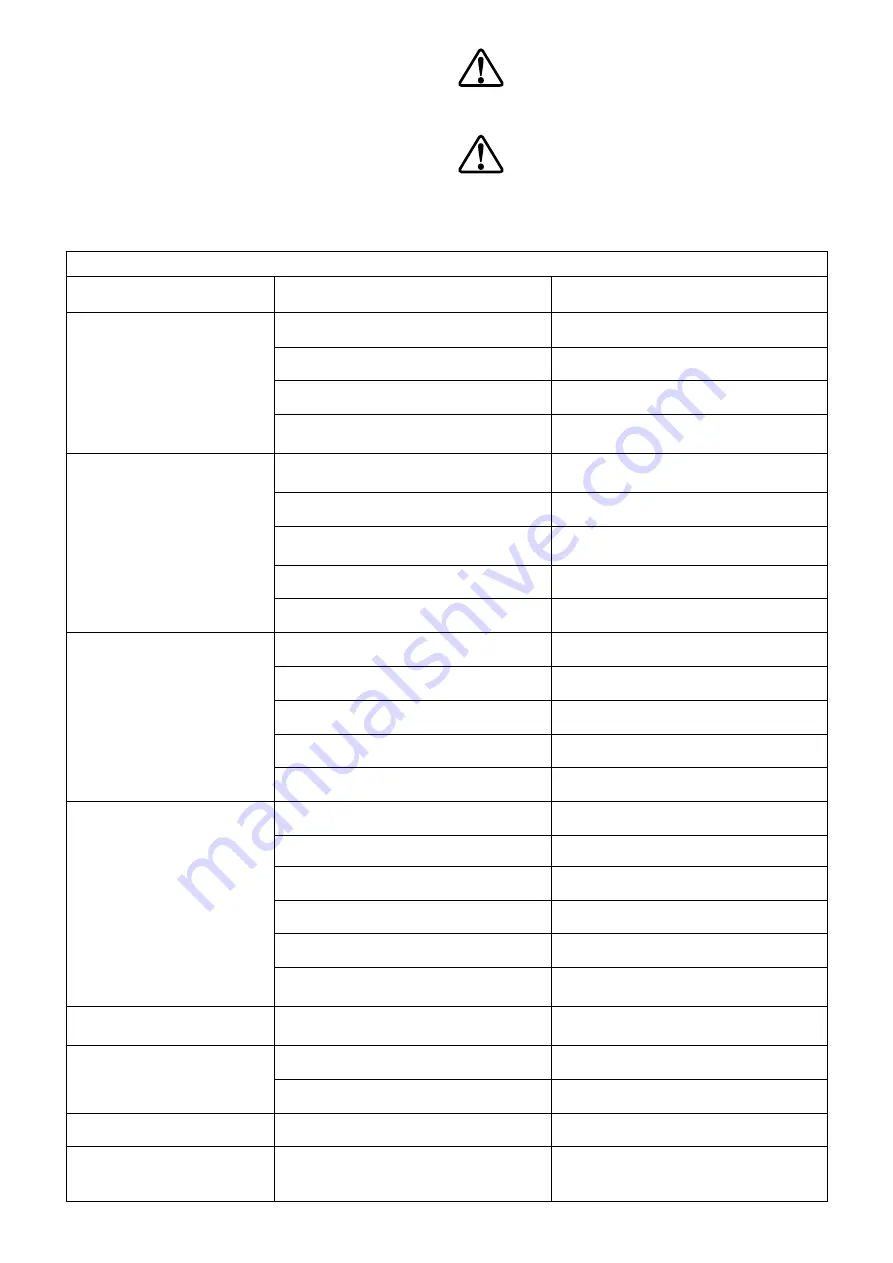
7
4. From the underside of the head, slide the new or rotated
blade into the dovetail shaped groove in the blade holder,
until the ball detent snaps into position. The blade is fully
installed when the bottom of the blade is fl ush with the fl at
bottom of the blade holder.
8.0 TROUBLESHOOTING
The Troubleshooting Chart is intended as a guide to help you
diagnose and correct various possible problems.
Only qualifi
ed hydraulic technicians should troubleshoot
and service the nut splitter. For repair service, contact the
Authorized Enerpac Service Center in your area.
WARNING:
Fully release hydraulic pressure and
disconnect hydraulic hose(s) from nut splitter cylinder
before performing any adjustments, repairs or
maintenance.
CAUTION:
Piston retract spring and other internal
parts may eject from cylinder suddenly during
disassembly. To avoid personal injury, use caution if
cylinder disassembly is necessary. Cylinder
disassembly and repairs should be performed only by
qualifi ed personnel.
Troubleshooting Chart
Problem
Possible Cause
Action
1. Nut splitter cylinder will not
hold pressure.
Piston seal leaking.
Replace seal.
Coupler leaking.
Replace coupler.
Cylinder internal relief valve malfunction.
Check relief valve and replace if required.
Hydraulic pump malfunction.
Check hydraulic pump for proper operation.
Repair or replace pump as required.
2. Nut splitter cylinder builds
pressure, but piston and blade
do not move or move only a
partial amount.
Pump reservoir not vented.
If using a vented pump, loosen vent/fi ll cap
or vent screw as required to provide venting.
Coupler not fully assembled.
Check couplers.
Both hoses not connected.
(double acting models only)
Be sure that both hoses are connected.
Piston at full stroke.
Allow piston to retract.
Blocked hose.
Replace hose.
3. Nut splitter cylinder will not
build pressure.
Pump release valve open.
Close pump release valve.
Piston seal leaking.
Replace seal.
Cylinder internal relief valve malfunction.
Check relief valve and replace if required.
Insuffi cient oil in pump.
Add oil to pump reservoir as required.
Coupler leaking.
Replace coupler.
4. Nut splitter cylinder will not
retract or retracts very slowly.
Loose coupler.
Check coupler and tighten if loose.
Restricted or blocked hose.
Replace hose.
Incorrect coupler being used.
Install correct coupler.
Incorrect hose being used.
Install correct hose.
Pump release valve closed.
Open pump release valve.
Broken or weak piston return spring.
(single acting models only)
Replace return spring.
5. Nut splitter builds full pressure,
but will not split nut.
(See Section 6.4 of instructions.)
(See Section 6.4 of instructions.)
6. Hose is diffi cult to assemble.
Damaged coupler.
Replace coupler.
Internal pressure within hose.
Vent hose.
7. Frequent blade replacement.
Lubricant not used.
Use lubricant.
8. Leakage from nut splitter oil
bleed hole on underside of
blade holder.
Pressure above 10,000 psi [700 bar].
Release system pressure to allow cylinder
internal relief valve to reset.

























